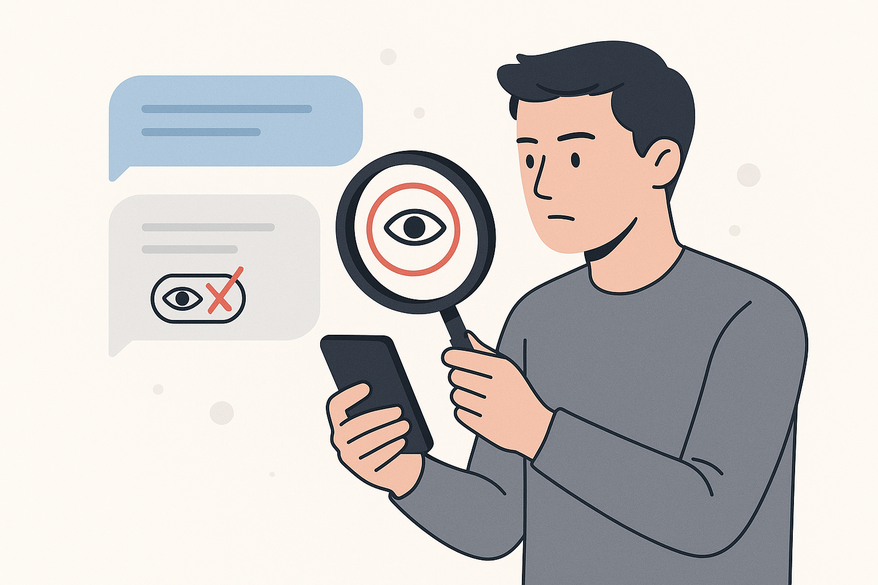Understanding the Fake Chat Message Seen Indicator
Discover how fake chat message seen indicators affect communication, why they occur, and how to spot them for improved trust and clarity in digital conversations.

Estimated reading time: 7 minutes
Key Takeaways
- Fake seen indicators falsely show messages as “read” without user action.
- Technical glitches and third-party mods are common causes.
- Spot anomalies by toggling read receipt settings and testing across devices.
- False read receipts can erode trust and pose privacy risks.
Table of Contents
- Introduction & Overview
- Explanation of the Concept
- Reasons for Fake Indicators
- How to Identify Fake Seen Indicators
- Implications and Consequences
- Conclusion
- FAQ
Introduction & Overview of Fake Chat Message Seen Indicator
A fake chat message seen indicator is a misleading signal in a messaging app that shows a message as “seen” when the recipient never opened it. Accurate read receipts shape expectations and drive efficient communication in personal and professional contexts.
- Define fake seen indicator: “A misleading signal in a messaging app that inaccurately shows a message as ‘seen’ when the recipient never opened it.”
- Explain relevance: Accurate read receipts build trust and prompt timely replies (MobileTrans guide).
- Emphasize stakes:
- Miscommunications in personal chats
- Delays in business responses
- Potential security concerns (LinkedIn read receipts article)
- Common contexts: WhatsApp, Messenger, LinkedIn messaging, third-party chat clients.
Explanation of the Fake Chat Message Seen Indicator Concept
Terminology Breakdown
- Fake chat: Manipulated or non-authentic conversation threads.
- Message seen: UI cue (ticks, “Seen” label) indicating a message was opened.
- Indicator: UI element (blue ticks, eye icon, timestamp) signaling message status.
Underlying Mechanisms
- Official read-receipt workflow: When a recipient opens a message, the server logs the event and updates the sender’s UI (MobileTrans guide).
- Technical quirks:
- Notification previews can trigger read events.
- Background sync or timeouts may send false updates.
- Third-party app interventions: Privacy-focused tools or mods spoof read receipts for pranks or demonstrations. For example, Vidulk - Fake Text Message Story App makes it easy to simulate read receipts.
Genuine vs. Fake Read Receipts
- Genuine: Auto-generated by official app code upon message open (MobileTrans guide).
- Fake:
- Occur when read receipts are off or previews alone mark as seen.
- Result from malicious or novelty mods (LinkedIn read receipts article).
Reasons Why a Fake Chat Message Seen Indicator Might Exist
- Technical Glitches:
- Sync mismatches display read status incorrectly (MobileTrans guide).
- Network latency causing premature updates.
- Intentional Feature Manipulation:
- User scripts or mods spoof read receipts.
- Marketing tools fake “seen” for tutorials.
- App Design Quirks & Privacy Settings:
- Notification previews may mark as seen.
- Disabling read receipts can produce inconsistent behaviors.
- User Expectations: Most assume “seen” equals “read,” so deviations feel deceptive.
How to Identify and Interpret Fake Chat Message Seen Indicators
- Troubleshoot by toggling read receipts off and on and observing status.
- Send test messages while only viewing notification previews.
- Compare read receipts across devices or web vs. mobile clients.
- Watch for red flags:
- “Seen” appears without action.
- Inconsistencies between chat windows.
- Unknown privacy-modifying apps in settings.
- Examples:
- WhatsApp never shows blue ticks if receipts are disabled (MobileTrans guide).
- LinkedIn read receipts depend on subscription and settings (LinkedIn read receipts article).
Implications and Consequences of Fake Chat Message Seen Indicator
- Trust & User Experience:
- False receipts cause frustration and miscommunication.
- Business delays if senders assume messages were read.
- Security & Privacy Risks:
- Used in social engineering or stalking.
- Confusion may lead users to disable genuine privacy features.
Conclusion
Identifying fake chat message seen indicators is key to maintaining trust. Keep apps updated, review privacy settings, perform simple tests, and report any suspected bugs or malicious mods. For official help:
FAQ
- Why does my message show as “seen” if I never opened it? Notification previews, sync glitches, or privacy-mode inconsistencies can trigger false seen indicators.
- How can I prevent fake read receipts? Use official app versions, disable third-party mods, and adjust read receipt settings.
- Are there tools to detect fake indicators? No official tools exist, but cross-device testing often reveals inconsistencies.
- Where to get help if I suspect manipulation?
- WhatsApp FAQs
- LinkedIn Help Center
- Tech forums on messaging privacy and security.





